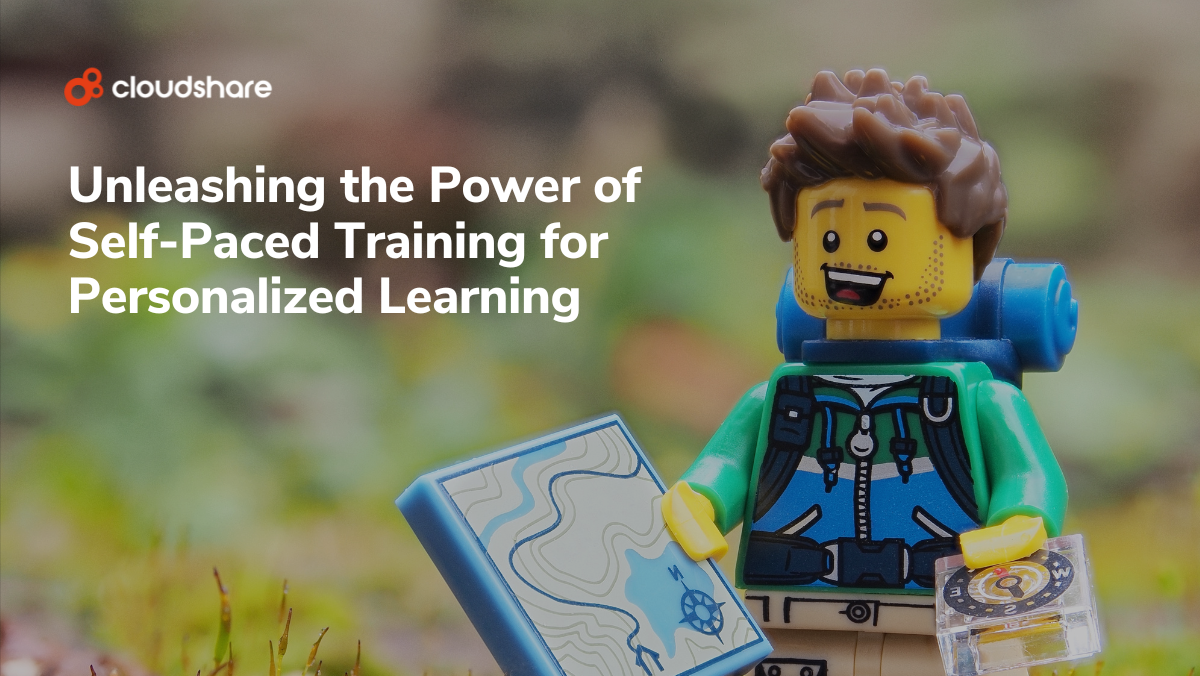
Expectations have changed in both the B2B and B2C space. Customers now demand training and onboarding geared to their unique challenges and pain points. Employees seek employers that provide tailored professional development.
We’ve maintained for some time that personalization is the future of learning and development — but that’s no longer the case. The future has arrived, and self-paced training can help you embrace it. Top performing organizations such as McKinsey have already realized this, and the global online self-paced learning market, currently priced at $8.7 billion, is expected to reach $14.1 billion by 2030.
We’ll go over a few of the reasons behind that growth, then walk you through how to create a self-paced learning program for your business.
What is Self-Paced Training?
Self-paced training allows a learner to progress through a course on their own time and at their own rate. Rather than engaging with a course in a classroom or as part of a group, the learner has complete autonomy over where and when they learn. In some cases, they may even be able to control what they learn and how they learn it.
Self-Paced Training vs. Instructor-Led Training
In a traditional instructor-led program, participants have limited time to engage with and absorb material. That isn’t the case with a self-paced course, which allows learners to consume the material at whatever rate they’re comfortable with. This has the potential to improve retention and performance by as much as 67 percent.
Since self-paced training is typically delivered via the cloud, there’s also no need to prepare a traditional classroom or lab setup. Because this delivery method requires less overhead than other training methods, organizations don’t need to worry as much about expending limited training resources. Instead, they can focus on providing tailored, interactive hands-on environments.
Consequently, self-paced training lends itself incredibly well to personalization. Organizations leveraging a self-paced program can offer near-unmatched flexibility, catering directly to the learning style, use case and preferences of each student.
How to Create a Self-Paced Training Program
- Before You Begin
Start by defining your objective and your Key Performance Indicators. Who is your training for, and what are your desired outcomes? How will you quantify success?
Most importantly, is self-paced training the best way to achieve that success, or is there another training modality that might work better? - Tailor Your Training Content
Self-paced training represents a completely different learning modality from instructor-led training. This means that you’ll need to develop completely new materials for your self-paced courses. While you can still use the same content as a basis, a course designed to be delivered by an instructor isn’t going to translate well to a self-directed setting.
Above all, remember that less is more — avoid using training materials that are too long or information-dense. - Measure, Monitor, and Listen
A good self-paced training program provides learners with on-demand feedback about their progress and performance. What many organizations don’t realize is that they should also collect feedback from learners. It isn’t enough to simply monitor an analytics dashboard.
While that data is crucial, learner surveys and questionnaires can be equally valuable, providing you with insight into potential bottlenecks or opportunities for optimization. - Automate as Much as Possible
Ideally, your training should require only a light touch from your organization. Participants should be able to easily spin up and run through training instances as necessary. Intervention from your instructors or support staff should only be required in rare cases. - Embrace Unique Delivery Methods
Self-paced training lends itself incredibly well to both microlearning and gamification. The former breaks down training into tiny bite-sized sessions, which can then be contextually delivered to learners. The latter helps motivate learners by incorporating game-like elements such as leaderboards, simulations, scenario-based activities and achievements. - Diversify Your Training
You don’t need to choose either instructor-led training or self-paced training. Your organization can easily give customers the option of selecting one of the two. Some businesses even go for a blended approach, creating courses that incorporate both self-paced and instructor-led training in equal measure. - Provide Guidance Where Possible
While learners should still have full autonomy to pursue your training however they see fit, you can still provide them with a recommended learning path. The people who want to go their own way can continue to do so. Those who might feel overwhelmed or uncertain where to start will appreciate having access to a structured, personalized lesson plan. - Consider a Virtual Training Platform
If your software is highly complex or technical, you may want to consider employing a cloud-based virtual training platform. This will allow you to easily spin up and scale training instances for both customers and employees without having to worry about hardware limitations. Once you have that foundation in place, there are a few design considerations you’ll want to keep in mind.

Learn more about what’s involved in creating a winning self-paced training program.
There’s No Such Thing As “One Size Fits All” Training Approach
In today’s SaaS landscape, personalization is everything. Modern customers expect your organization to provide them with a fully tailored experience from first contact through to onboarding. Modern employees, too, demand personalized, relevant professional development materials.
Self-paced training represents arguably one of the most compelling ways to meet the expectations of both groups.
With that said, don’t make the mistake of treating it as a silver bullet for all your training needs. Self-paced won’t work for every demographic, nor is it suitable for every use case. If it were, we wouldn’t see blended learning becoming the industry norm.
Instead, you should accept self-paced training for what it is — another option for providing people with personalized, compelling hands-on learning experiences.
FAQs
1. How Can Learners Maximize Their Success in Self-Paced Training Programs?
Learners can maximize their success in self-paced training programs by establishing a structured routine and setting clear, achievable goals. Creating a dedicated study schedule helps maintain consistency and ensures steady progress. Leveraging available resources, such as interactive content, quizzes, and supplementary materials, can deepen understanding and reinforce learning. Actively seeking feedback and utilizing on-demand support can address any challenges or uncertainties that arise. Additionally, breaking down the material into manageable chunks and using techniques like microlearning can enhance retention and prevent overwhelm. By staying disciplined, motivated, and proactive, learners can effectively navigate and excel in self-paced training environments.
2. How Effective Is Self-Paced Learning Compared to Traditional Classroom Learning?
Self-paced learning can be more effective than traditional classroom learning in several key ways. It allows learners to progress at their own pace, providing the flexibility to spend more time on challenging topics and quickly move through familiar material, which can enhance retention and comprehension. This personalized approach caters to individual learning styles and schedules, often resulting in higher engagement and satisfaction. Additionally, self-paced learning leverages technology to offer interactive and immersive experiences that can be more compelling than passive classroom lectures. However, the effectiveness of self-paced learning largely depends on the learner’s self-discipline and motivation, making it essential to provide robust support and resources to maximize its benefits.
3. What Technologies Are Used in Self-Paced Training?
Self-paced training leverages a variety of advanced technologies to enhance the learning experience. Cloud-based learning management systems (LMS) provide a centralized platform for delivering and tracking training content, enabling learners to access materials anytime and anywhere. Interactive tools such as video tutorials, simulations, and virtual IT labs offer hands-o
Personalized learning paths adapt content based on the learner’s progress and performance, ensuring that each individual receives a tailored learning experience. Mobile learning technologies ensure that training is accessible on smartphones and tablets, further increasing flexibility and convenience for learners.
Gamification elements, including leaderboards and achievement badges, motivate learners and increase engagement. Artificial intelligence is used for progress tracking and setting checkpoints, providing real-time feedback and support to keep learners on track.
By integrating these technologies, self-paced training programs can offer a more engaging, flexible, and effective learning experience that meets the diverse needs of learners.
Book a demo to learn how CloudShare can help you deliver better virtual training, self-paced, and more.



